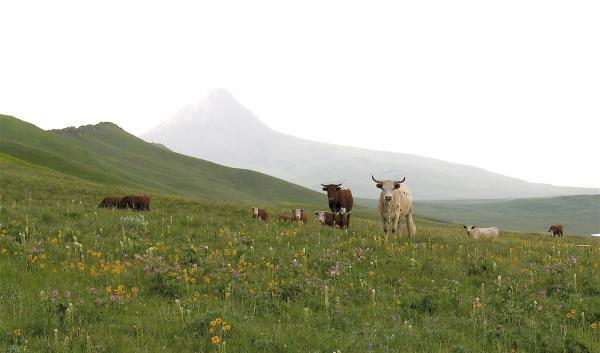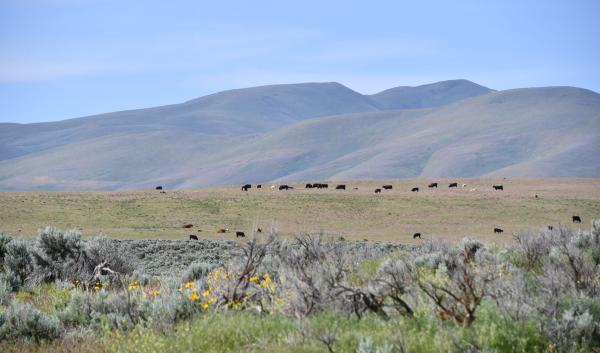Livestock grazing plays an important role in the tribal economies within the Great Basin states, but as the climate continues to warm and water resources decrease, innovative grazing strategies will become critical to sustain healthy rangelands and the complex social and environmental systems that depend on them.
A recent climate change vulnerability assessment for the Upper Snake River Watershed notes that mean annual temperatures will increase by as much as 6.5° F by the 2050s and 10.9° F by the 2080s, causing current snow-dominated precipitation areas to shift to transitional or rain-dominant precipitation (Figure 12, p.16). The expected additional water stress will require adaptive approaches to ranching in the region.
Many tribal and non-tribal ranchers throughout the Basin have developed innovative grazing and water management strategies because they already lack water access or experience water shortages for their cattle operations. As climate change further stresses water resources, improved information-sharing and new adaptation strategies are necessary. However, information about informal strategies is often hard to find and formal sources can be overly technical. To improve access, the Upper Snake River Tribes Foundation worked with the Burns Paiute Tribe and Adaptation International to provide a comprehensive source of Basin-relevant water resource adaptation information.
The synthesis includes current literature on the successes and failures of existing water management projects and management strategies from tribal and non-tribal ranchers, watershed councils, and state and federal agencies. The intended outcome is to help develop and invest in a set of future projects and strategies to improve grazing and water management in the region, while benefiting habitat wildlife. In addition, the information is intended to help users identify:
- Potential vulnerabilities of cattle to climate change
- Ranching operations that are implementing green water solutions (i.e., the use of wind or solar to pump and move water instead of the use of diesel tanker trucks)
- Successful water management strategies in different environments- to help identify where various strategies have and have not worked
- Regions where innovative changes in water delivery and cattle grazing strategies may be needed for dry or drying pastures
- Drought and Rangelands: Effects and Management Responses – provides succinct management recommendations to implement before, during, and after drought.
- Drought Impacts on Forests and Rangelands in the Southwest- a two-page summary of impacts that includes some Great Basin states.
- Vulnerability of Cattle Production to Climate Change on US Rangelands – a General Technical Report from the US Forest Service
- Great Expectations: Deconstructing the Process Pathways Underlying Beaver-Related Restoration is an article that addresses the complex and uncontrollable nature of stream restoration outcomes. It suggests a new approach to evaluation that includes identifying key processes and documenting how projects meet expectations along the way.
Additional resources on rangelands and climate change:




